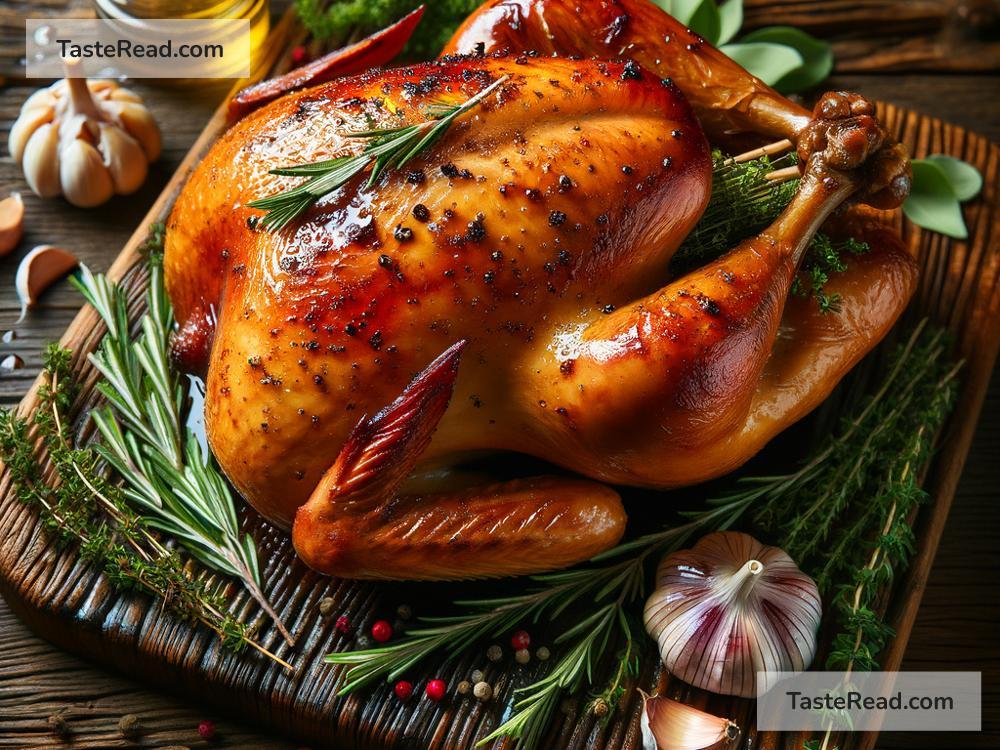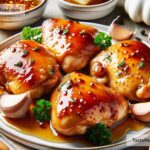How to Create Buttery Herb Roasted Turkey: A Step-by-Step Guide
Whether it’s for Thanksgiving, a family gathering, or a special dinner party, a buttery herb roasted turkey is a show-stopping centerpiece that’s sure to impress. The good news? You don’t need to be a professional chef to pull it off! With a little preparation and simple techniques, you can create a turkey that’s moist, flavorful, and golden-brown. Let’s walk through the process step by step.
Why Choose Herb Roasted Turkey?
Roasting a turkey with butter and herbs is a tried-and-true way to add a rich, savory flavor to your bird. The butter helps keep the meat juicy while creating that mouthwatering crispy skin. Herbs like thyme, rosemary, and parsley elevate the taste, infusing the turkey with earthy, fresh notes.
What You’ll Need
Before we dive in, here’s a list of ingredients and tools you’ll need to make your buttery herb roasted turkey:
Ingredients:
– 1 whole turkey (about 12-16 pounds)
– 1 cup (2 sticks) of unsalted butter, softened
– 4 cloves garlic, minced
– 2 tablespoons fresh thyme, chopped (or 1 teaspoon dried thyme)
– 2 tablespoons fresh rosemary, chopped (or 1 teaspoon dried rosemary)
– 2 tablespoons fresh parsley, chopped
– 1 tablespoon paprika (for color and added flavor)
– Salt and pepper, to taste
– 1 lemon, halved
– 1 onion, quartered
– 2 celery stalks
– 2 cups chicken or turkey stock (or water)
Tools:
– Roasting pan
– Rack for the pan (optional)
– Aluminum foil
– Meat thermometer
– Silicone spatula or spoon
– Kitchen twine (optional, for tying the turkey legs)
Step-by-Step Instructions
Step 1: Prepare the Turkey
Start by thawing your turkey if it’s frozen. Place it in the refrigerator for 2-3 days beforehand, depending on its size. On the day of cooking, remove the turkey from the packaging, take out the giblets and neck (usually found in the cavity), and rinse it with cold water. Then, pat the turkey dry with paper towels. Drying it well helps the skin get crispy in the oven.
Step 2: Make the Herb Butter
In a small mixing bowl, combine the softened butter, minced garlic, thyme, rosemary, parsley, paprika, salt, and pepper. Stir everything together until it forms a fragrant and creamy mixture. This herb butter will be the secret to your turkey’s flavor and moistness.
Step 3: Season the Turkey
Starting with the breast-side up, carefully loosen the skin of the turkey by inserting your fingers between the skin and the meat, creating pockets. Be gentle to avoid tearing the skin. Using a spoon or your hands, spread about half of the herb butter under the skin, directly onto the meat. This locks in flavor and keeps the turkey moist while cooking.
Rub the remaining butter all over the outside of the turkey, making sure it’s evenly coated. Don’t forget to season the cavity with a little salt and pepper.
Step 4: Stuff the Turkey with Flavor
Fill the cavity of the turkey with your lemon halves, onion quarters, and celery. These aromatic vegetables and citrus help infuse extra flavor while the turkey roasts. They also make your kitchen smell amazing!
If you’d like, you can use kitchen twine to tie the turkey’s legs together. This helps the turkey cook evenly and makes it look neat when serving.
Step 5: Set Up the Roasting Pan
Place the turkey on a rack inside the roasting pan. If you don’t have a rack, you can create a bed of chopped carrots, celery, and onions to keep the turkey slightly elevated. Pour the chicken or turkey stock into the pan; this liquid will keep the turkey moist and create flavorful drippings for gravy later.
Cover the turkey loosely with aluminum foil to prevent the skin from browning too quickly.
Step 6: Roast the Turkey
Preheat your oven to 325°F (163°C). Roast the turkey for about 15 minutes per pound. For example, a 12-pound turkey will take around 3 hours. Halfway through, remove the foil to let the skin crisp up.
Use a meat thermometer to check the turkey’s doneness. The thickest part of the breast should reach 165°F (74°C), and the inner thigh should reach 175°F (79°C).
Step 7: Rest the Turkey
Once the turkey is fully cooked, remove it from the oven and place it on a cutting board or serving platter. Let it rest for at least 20-30 minutes before carving. Resting allows the juices to redistribute, making the meat tender and juicy.
The Final Touch: Gravy and Carving
Don’t let those flavorful drippings go to waste! Use them to make a simple gravy by whisking them with flour or cornstarch and stock.
When it’s time to carve the turkey, start by slicing the breast meat, then move to the legs and wings. Arrange the pieces on a platter for your guests to enjoy.
Tips for Success
- Choose fresh, high-quality herbs for maximum flavor.
- Baste the turkey every 45 minutes with the pan drippings to keep it moist.
- Save the leftovers! Herb-roasted turkey makes wonderful sandwiches, soups, and casseroles.
Conclusion
Creating a buttery herb roasted turkey is easier than it seems, and the results are truly rewarding. By following these simple steps, you’ll have a gorgeous, succulent turkey that will delight your family and guests. Now that you know the secret to roasting the perfect turkey, the holidays and special gatherings will never be the same. Happy cooking!


